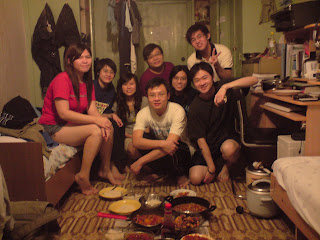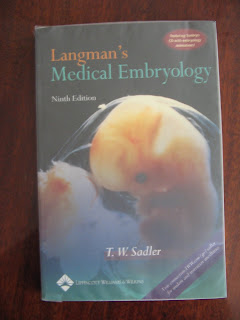
Happy New Year 2009 everyone! Best wishes from Volgograd, Russian federation. Tonight is the time for feast and party. Haa...
KUALA TERENGGANU: Trainee doctors will now get a day off after carrying out their 24-hour on-call duty.
Health Minister Datuk Liow Tiong Lai said the directive will take effect immediately.
He said it applies only to housemen on active call and at the hospital the entire time.
“We will not let these trainee doctors be overworked. We will look into their welfare,” he told reporters yesterday after visiting the Sultanah Nur Zahirah Hospital.
Liow was asked to comment on grouses from trainee doctors that they sometimes had to work almost 24 hours and then report to their superiors the next day.
Some trainee doctors complained that they had to work seven days a week without a single rest day during their two-year stint in government hospitals as housemen.
Liow said trainee doctors should also be allowed to concentrate on getting the right exposure and medical proficiency by giving them off-days.
A trainee doctor at Sultanah Nur Zahirah Hospital, who only wanted to be known as Sally, said she was relieved to hear that the ministry would look into their welfare.
“Frankly, we are very exhausted as we have to focus on our training and also carry out clinical rounds frequently,” she said. “It is stressful.”
Sally said she and her colleagues were unable to pay attention during their stints due to fatigue and time constraints.
Some thoughts to share after reading ?Mine is just simple : Same pay, more time to study, less time getting scolded. Haha....Anyway, i was joking about the 'less time getting scolded' part.. I am sure the senior doctors scold the trainee for their own good rite. :-)




Indications:
Procedure
Sources
Reichman, E MD and Simon, R MD. “Perimortem Cesarean Section” Emergency Medicine Procedures. McGraw Hill. 2004.
Roberts, J MD. et al. “Perimortem Cesarean Section” Roberts: Clinical Procedures in Emergency Medicine 4th ed. Elsevier. 2004.
The Young Monk Who Saved The Ants
Once upon a time in the deep mountains forest there lived an old monk and a young monk. The old monk was a great practitioner of Buddha-dharma and was frequently in deep meditation. Normally when he started meditation, it could last for half a day or one full day. In addition, during his meditation he would know what was going to happen in the future.
One day, the old monk meditated again. Suddenly he found out that his little disciple was going to pass away in eight days. Therefore the old monk called the young monk and said,
"My child, I am going to give you an eight-day holiday so that you can go home to see your mother and father."
"Really? That's very good, thank you Shifu."
In fact, lately I have been feeling quite homesick too."
"However, you must remember to come back here by the eighth day."
"Okay, Shifu, please take care of yourself. I am leaving now."
"Go home now!"
Delightedly the young monk went down the mountains, without realising that in the eyes of the old monk, there was sadness and a sense of reluctance to see him leave. After a long walk, the young monk stopped at the bank of the stream to drink some water as he was getting thirsty. Then he saw there was an ant cave in which countless ants were going into and out of it. He stayed to observe for a while with interest. When he was just about to leave,
"Oh! Why is the water level of the stream is rising? Oh no!! The ants will be drowned!!"
The reason was it had been raining upstream for a few days continuously. Therefore the water level downstream was starting to rise.
He quickly took off his cloth and he put some hard soil in it to made up a protection wall along the cave. Not only did he managed to stop water from covering the cave, but also skilfully diverted the flow of the waterto somewhere else.
Hence he saved the lives of countless ants. Eight days passed quickly. The old monk was strolling in the mountains forest sadly. Suddenly from a distance, he saw the little monk coming back upto the mountains cheerfully. Happily he asked the young monk to recount what he has done in the pass eight days while he had been away. When he pondered on this story he finally understood that because the young monk had saved the lives of countless ants this has caused his fated eight-day life expectancyto lenghten into a long and happy life.This is the merit of cultivating good deeds, however seemingly insignificant they be.
Found this inspiring story online...
~yenny~
Do not pursue the past.
Do not lose yourself in the future.
The past no longer is.
The future has not yet come.
Looking deeply at life as it is.
In the very here and now, the practitioner dwells in stability and freedom.
We must be diligent today.
To wait until tomorrow is too late.
Death comes unexpectedly.
How can we bargain with it?
The sage calls a person who knows how to dwell in mindfulness night and day,
'one who knows the better way to live alone.'
Bhaddekaratta Sutta
Still searching for the meaning in life and the secret to happiness...
~yenny~
A tough comment from Lama Yeshe in 'Becoming Vajrasattva, the Tantric Path of Purification':
"Why are we bored, lonely and lazy? Because we don't have the will to totally open our hearts to others. If you have the strength of will to totally open your heart to others, you will eliminate laziness, selfishness and loneliness. Actually, the reason you get lonely is that you are not doing anything. If you were busy, you wouldn't have time to get lonely. Loneliness can only enter an inactive mind. If your mind is dull and your body inactive, then you get lonely. Basically, this comes from a selfish attitude, concern for yourself alone. That is the cause of loneliness, laziness and a closed heart."
~yenny~
PRAYER FOR FREEDOM FROM SUFFERING
May all beings everywhere plagued
with sufferings of body and mind
quickly be freed from their illnesses.
May those frightened cease to be afraid,
and may those bound be free.
May the powerless find power,
and may people think of befriending each other.
May those who find themselves in trackless, fearful wilderness--
the children, the aged, the unprotected--
be guarded by beneficent celestials,
and may they swiftly attain Buddhahood.
The Buddha
~yenny~
An example to illustrate attachment that I love:
"In the South of India, people used to catch monkeys in a very special way. Actually they let monkeys catch themselves. What they did is cutting a small hole in a coconut, just large enough for a monkey to put its hand in. Next, you fix the coconut to a tree, and fill it with a sweet. The monkey smells the sweet, squeezes its hand into the coconut, grabs the sweet and .... finds that the fist does not fit through the hole. Now the trick is, that the last thing the monkey will think of is to let go of the sweet; and it holds itself prisoner. Nothing could be easier for a human being who comes and catches it. "
Saw this phrase somewhere..find it meaningful..
~yenny~













Twenty-five percent of patients with transudative pleural effusions are mistakenly identified as having exudative pleural effusions by Light's criteria. Therefore, additional testing is needed if a patient identified as having an exudative pleural effusion appears clinically to have a condition that produces a transudative effusion. In such cases albumin levels in blood and pleural fluid are measured. If the difference between the albumin levels in the blood and the pleural fluid is greater than 1.2 g/dL (12 g/L), it can be assumed that the patient has a transudative pleural effusion.
If the fluid is definitively identified as exudative, additional testing is necessary to determine the local factors causing the exudate.



today officially end of lectures for all 3 main subjects for 2nd year..remaining is forensic medicine and few lab sessions and revision...tiring day... 10 more days to block 4 exam...nearer and nearer..count down starts..
p/s: today my dear very charming :-)


 Got an invitation to the graduation ceremony tomorrow afternoon, from the dentistry senior, Dr.Choo aka the Mouse ( the genuine one in Volgograd city, while i am the fake one.lol). This year the graduates come from various countries, total 24 in number ( Msia, China, India, Vietnam, Kenya....), flags are shown, you name them all.. Will update this event after tomorrow.
Got an invitation to the graduation ceremony tomorrow afternoon, from the dentistry senior, Dr.Choo aka the Mouse ( the genuine one in Volgograd city, while i am the fake one.lol). This year the graduates come from various countries, total 24 in number ( Msia, China, India, Vietnam, Kenya....), flags are shown, you name them all.. Will update this event after tomorrow.






If you have a sore throat already, to make yourself and your throat feel better there are some options:

Scientific studies have examined the relationship between coffee consumption and an array of medical conditions. Findings are contradictory as to whether coffee has any specific health benefits, and results are similarly conflicting regarding negative effects of coffee consumption.
Coffee appears to reduce the risk of Alzheimer's disease, Parkinson's disease, heart disease, diabetes mellitus type 2, cirrhosis of the liver, and gout, but it increases the risk of acid reflux and associated diseases. Some health effects of coffee are due to its caffeine content, as the benefits are only observed in those who drink caffeinated coffee, while others appear to be due to other components. For example, the antioxidants in coffee prevent free radicals from causing cell damage.
Coffee's negative health effects are mostly due to its caffeine content. Research suggests that drinking caffeinated coffee can cause a temporary increase in the stiffening of arterial walls. Excess coffee consumption may lead to a magnesium deficiency or hypomagnesaemia, and may be a risk factor for coronary heart disease. Some studies suggest that it may have a mixed effect on short-term memory, by improving it when the information to be recalled is related to the current train of thought, but making it more difficult to recall unrelated information. About 10% of people with a moderate daily intake (235 mg per day) reported increased depression and anxiety when caffeine was withdrawn, and about 15% of the general population report having stopped caffeine use completely, citing concern about health and unpleasant side effects. Nevertheless, the mainstream view of medical experts is that drinking three 8-ounce (236 ml) cups of coffee per day (considered average or moderate consumption) does not have significant health risks for adults.
An American scientist Yaser Dorri has suggested that the smell of coffee can restore appetite and refresh olfactory receptors. He suggests that people can regain their appetite after cooking by smelling coffee beans, and that this method might also be used for research animals.